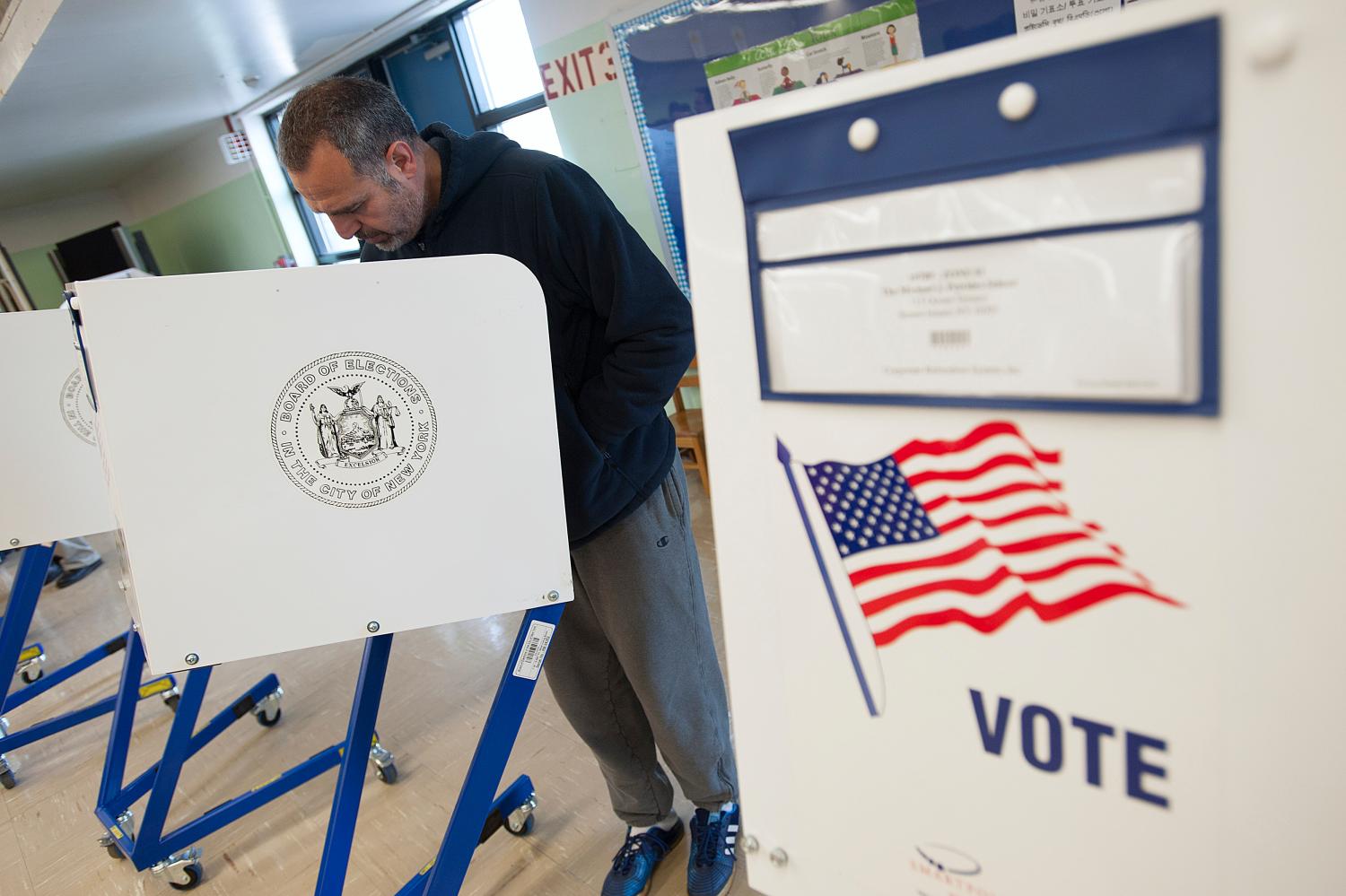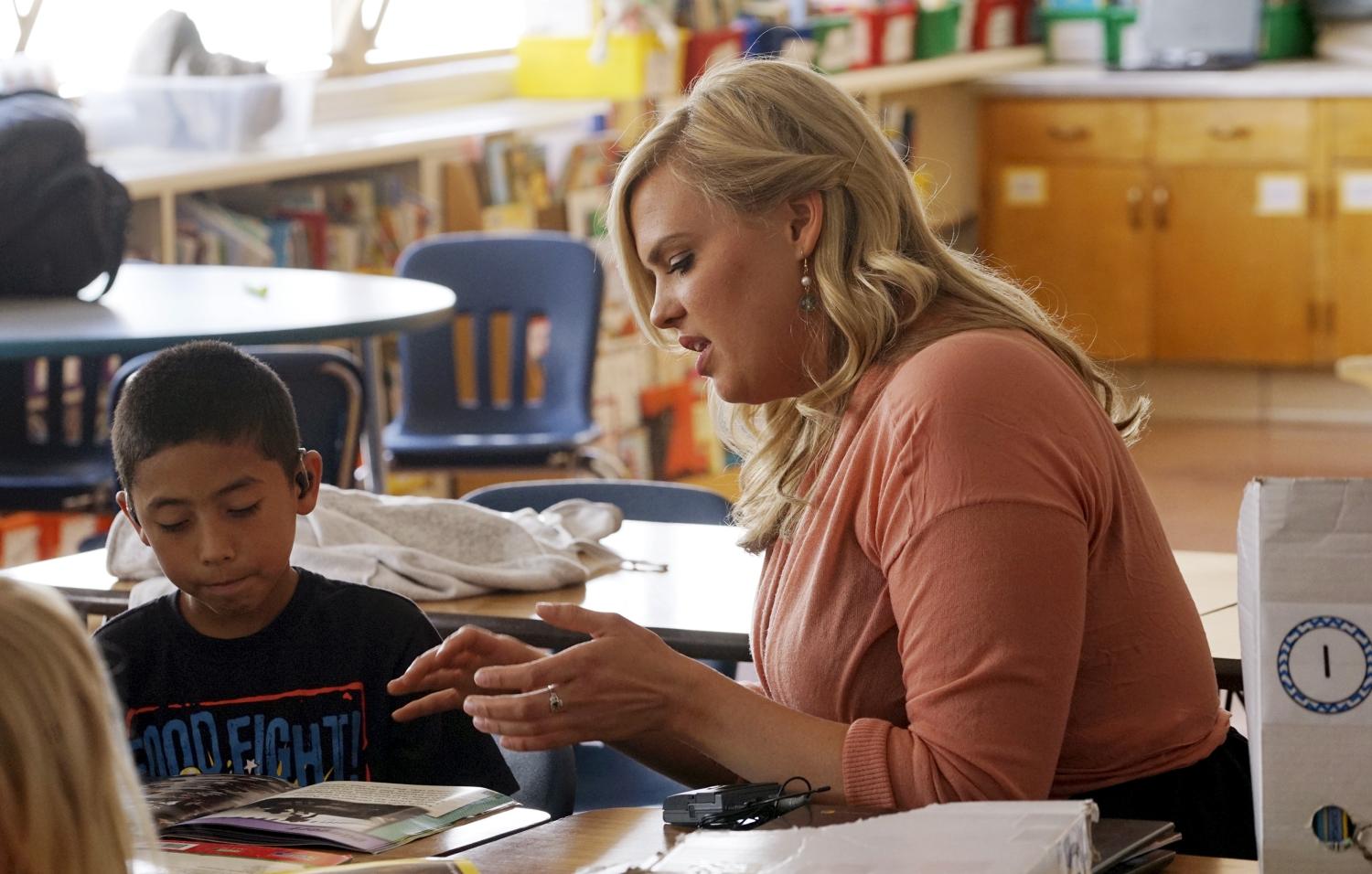Perhaps because of the personalities and histories of the major candidates, K-12 education has not been a focus of the presidential campaign. Given the polarization of the electorate, this may be a good thing—on issues from climate change to vaccinations, polarization of the American electorate seems to be increasing. On education, however, the electorate is not especially polarized.
This means that the next president and congress (as well as governors and state legislatures) have the opportunity to use education for bipartisan policy efforts that will unify, rather than fracture, diverse groups.
But what do the voters want? And is what they want actually good policy? To answer these two questions, I will draw on public opinion data collected over the last three years (2014-16), as well as high quality experimental and quasi-experimental research.
Based on my analysis of public opinion, there is broad public support for four policies, all of which also have at least modest research evidence to support them. These policies are 1) raising education spending (with several possible routes for allocating those funds); 2) accountability for teachers and schools; 3) enhanced choice among public school options, especially charter schools; and 4) early childhood education.
Increasing education spending
Regardless of party affiliation, there is widespread belief that K-12 schools need more money. Phi Delta Kappan has asked Americans[i] for the last decade what the biggest problem is facing American schools, and “lack of financial support” has ranked highest every year.[ii] Similarly, Education Next has asked Americans whether education spending should increase, and in 2016 46 percent agreed it should with 8 percent supporting decreases and 45 percent supporting no change.[iii] Even when informed of the amount of spending in their district, all groups were more favorable toward spending increases than decreases (the least favorable group was Republicans who still favored increases over decreases 31 percent to 14 percent).
To be sure, there is undoubtedly state-to-state (and perhaps even district-to-district) variability in these beliefs, just as there are large state-to-state differences in the amount of spending. In California, a relatively low-spending state, a PACE/USC Rossier poll that I co-lead found that 77 percent of voters agreed the state should be spending more on its schools (just 21 percent said the state spends enough).[iv] In New York, a much higher-spending state, only 41 percent of voters agreed that the state should be spending more.[v] While polling data is not available for each state, I suspect that voters’ views on funding are correlated with the spending level in the state.
Is increasing education spending a good idea? This is among the most contentious issues in all of education research, so blanket statements here are not helpful. But several recent studies using rigorous quasi-experimental designs show substantial impacts of court-ordered funding increases on long-run student outcomes, especially in the poorest districts.[vi] This evidence suggests that targeted spending increases may actually matter quite a lot.
And how should these new education dollars be spent? Voters have ideas on this, too. The 2014 Education Next poll asked Americans how they would want to spend extra resources (with choices of reducing class sizes, increasing teacher pay, and buying books or technology), and reducing class sizes came in first place (with 35 or 46 percent support, depending how the question was asked).[vii] Certainly there is evidence that class-size reduction improves student outcomes in the early grades,[viii] though many will point out that it is an extremely expensive intervention that involves tradeoffs.[ix]
California voters were wildly enthusiastic about paying teachers more in the most recent PACE/USC Rossier poll, with more than three-quarters somewhat or strongly supporting pay increases.[x] In the 2016 Education Next poll there was also strong support for teacher pay increases—regardless of how the question was asked, 42 percent to 65 percent of Americans favored pay raises and virtually no one thought pay was too high.[xi] While I know of no strong evidence across-the-board pay raises boost student outcomes, there is a growing body of literature suggesting some positive effects of various forms of performance-based pay.[xii] Furthermore, there is some evidence that meaningful pay increases might attract stronger candidates to the profession.[xiii]
As for technology and materials, this is one area where the costs could actually be quite minimal. The marginal cost of choosing one textbook over another is generally close to zero (because all textbooks cost about the same amount[xiv]), and several recent studies have documented meaningfully large differences in student outcomes.[xv] So improving the quality of curriculum materials is a very low-cost way to improve outcomes, even if it is the least supported among the options presented by Education Next. But this approach is hampered by the evidence base on curriculum effects, which is quite limited due to a lack of data.[xvi]
Accountability
While voters favor more money for schools, it’s also clear that they want to see results for their investment. For instance, in our California poll we asked voters whether they wanted schools to have more money, reformed operations, or both, finding a 12/24/62 split[xvii]. More than two-thirds of California voters (both Democrats and Republicans) thought it was very important to hold schools accountable for spending education dollars efficiently, preparing students for college, and giving students the skills to get a job. However, while both California[xviii] and national[xix] voters are very enthusiastic about annual testing (with two-thirds or more of both parties’ voters supporting this position), they are more leery about the role of test scores in accountability, with just 36 percent indicating this is very important.[xx]
The results are very similar when asking about teacher accountability. For instance, Phi Delta Kappan asked Americans whether failing schools should have their staff replaced or be provided more resources to improve, and respondents overwhelmingly favored replacing the staff (62 to 32).[xxi] Both California[xxii] and national[xxiii] polls indicate that voters (and even teachers themselves) think a reasonable proportion of teachers—between a tenth and a two-fifths—needs improvement. And voters are skeptical of teacher tenure (both Republicans and Democrats plurality opposed).[xxiv] They are favorable on the idea of student learning being a factor in teacher evaluations[xxv] but not student test scores[xxvi] (perhaps an impossibly thin needle to thread).
Voters are again right to support consequential accountability. There is a great deal of research showing school accountability can improve student outcomes.[xxvii] To be sure, these gains have not erased achievement gaps or turned us into Finland, but they are real and meaningful for the students in America’s schools. There is also emerging evidence suggesting positive effects of new teacher accountability systems (typically as part of pay-for-performance systems).[xxviii] This evidence base will continue to grow as state evaluation systems mature.
School choice
A third area on which there is broad agreement is that parents should have educational choices for their children. The Education Next poll has asked about charter schools for a decade and found plurality support from Democrats and Republicans in every year.[xxix] While support for charters has trended down slightly over time, support still outweighs opposition among both Democrats and Republicans in 2016.[xxx] Support is even higher in the Phi Delta Kappan poll, with 50 percent of Democrats and 75 percent of Republicans supporting charter schools.[xxxi]
The story is much more mixed when it comes to school vouchers. In the most recent polls, voters have been evenly split on universal vouchers, but with more voters strongly opposed than strongly in favor.[xxxii] Interestingly, Democrats were more favorable about vouchers (49 percent in favor, 39 percent opposed) than Republicans (41/49). When it comes to targeted vouchers aimed at low-income children, however, there is plurality opposition among both Democrats and Republicans. Phi Delta Kappan has confirmed net opposition to vouchers.[xxxiii]
As to the effectiveness of charter schools, the evidence is certainly more mixed than for spending or for accountability. The most recent national charter school study finds a small positive effect in reading and a small negative effect in mathematics. However, that same study finds larger positive effects for the most traditionally disadvantaged groups—English learners, students in poverty, and Black and Hispanic students.[xxxiv]
These analyses also make it clear that there is a great deal of heterogeneity in charter school effects within and across states. In particular, urban charter schools seem to be much more effective than non-urban charter schools.[xxxv] In the large majority of urban areas, charters seem to have positive effects on student learning, and these effects are sometimes large.[xxxvi] Perhaps the most consistent evidence of positive effects is in Boston, which has been covered previously in this series. In short, the takeaway from the charter literature seems to be that they are, on average, more effective than traditional public schools in urban settings and perhaps should be encouraged there, but that authorizers and policy contexts matter tremendously in determining whether these schools succeed or not.[xxxvii]
Early childhood education
There is both California[xxxviii] and national[xxxix] evidence that voters strongly support enhanced early childhood education options. Even when the proposal is framed as a federal program, a majority of Republicans (and virtually all Democrats) support expanded options.[xl] In contrast, a California poll did show a large partisan difference in support for a state-funded preschool program.[xli] Although California’s Democratic supermajorities make this less of an issue, it could be indicative that Republicans in other states may have more concerns about funding of early childhood programs).
Research establishes clearly that there are large gaps in school readiness based on socioeconomic status and race/ethnicity.[xlii] A number of studies of model early childhood programs suggest that they can have large, long-lasting effects on student and adult outcomes.[xliii] However, the achievement effects of many current scaled-up programs seem to fade out as students enter public school,[xliv] and one Tennessee study suggests achievement benefits may turn negative.[xlv] There also seems to be an important role for quality and implementation fidelity in maximizing the effects of early childhood interventions,[xlvi] with evidence suggesting a large degree of variation across settings and programs in impacts.[xlvii]
Discussion
The polling evidence review here suggests that the American public wants more spending, more accountability, more choices, and more early childhood education. Certainly there are other effective policies where there is probably broad agreement but where there simply is little public opinion evidence (examples that come to mind: intensive tutoring; services to improve or streamline college application; and matching, wraparound services). My point is not that other policies are therefore unimportant, but rather that the policies mentioned here have broad support, have moderate to strong research evidence of positive effects (except for the case of nonurban charters, which have strong evidence of neutral to negative effects), and could therefore be a prime target for ongoing bipartisan policy efforts.
One wrinkle is that several of the above-mentioned policies, but particularly increased spending (on smaller class sizes) and early childhood education are likely to be much more beneficial if narrowly targeted. Upper-middle class and wealthy parents do not need universal preschool options, on average, but low-income children may substantially benefit from these programs. Similarly, class size policies are likely to be effective if they include large class size reductions in the earliest grades targeted at the neediest children.[xlviii] Politically, it may not be feasible to restrict or target programs in these ways, but from an economic standpoint this would be the best choice. In short, policymakers might use public opinion to motivate legislative action, but they should also take research findings into consideration when designing the policies.
Finally, there is a difference between voter opinion and the action of elected officials. For instance, even if Republican voters support increased educational spending, recent history would suggest that the likelihood of increased federal spending on education is slight with Republicans in control of Congress. But it is possible to imagine that voters passionate about these issues could persuade their elected officials to address them, and it is also possible that action may be more feasible at the state level where the politics may be less toxic and where most of the policy action on K-12 education is located anyway. Furthermore, recent events make it clear that party voters and leadership are not always in lockstep, and new policies can sometimes make it onto the agenda under new leaders (e.g., Donald Trump’s support of paid maternal leave programs).
The authors did not receive financial support from any firm or person for this article or from any firm or person with a financial or political interest in this article. They are currently not an officer, director, or board member of any organization with an interest in this article.
[i] Most of the national polls cited here are polls of adults, whereas state polls are typically polls of voters. In general I use these words interchangeably. See each poll for specific details on its methodology.
[ii] http://pdkpoll2015.pdkintl.org/wp-content/uploads/2016/08/PDK2016PollToplineReport.pdf
[iii] http://educationnext.org/files/2016ednextpoll.pdf
[iv] http://edpolicyinca.org/sites/default/files/PACE USC Poll CA Statewide Topline.pdf
[v] http://www.timesunion.com/7dayarchive/item/Times-Union-Siena-College-Education-Poll-30096.php
[vi] http://www.nber.org/papers/w20118, https://cepa.stanford.edu/sites/default/files/shores_candelaria_causal_estimate.pdf, http://eml.berkeley.edu/~jrothst/workingpapers/LRS_20160714-complete.pdf
[vii] http://educationnext.org/files/2014ednextpoll.pdf
[viii] http://aer.sagepub.com/content/37/1/123.short
[ix] https://www.brookings.edu/research/class-size-what-research-says-and-what-it-means-for-state-policy/
[x] http://edpolicyinca.org/sites/default/files/PACE USC Poll CA Statewide Topline.pdf
[xi] http://educationnext.org/files/2016ednextpoll.pdf
[xii] https://www.the74million.org/article/the-merit-pay-myth-why-the-conventional-wisdom-about-paying-teachers-is-wrong
[xiii] http://www.mitpressjournals.org/doi/abs/10.1162/rest.89.4.737?journalCode=rest#.V9wnhZMrI6U, http://www.personal.kent.edu/~cupton/Senior Seminar/Papers/hoxbyleigh_pulledaway.pdf
[xiv] https://cdn.americanprogress.org/wp-content/uploads/2015/10/06111518/CurriculumMatters-report.pdf
[xv] http://ies.ed.gov/ncee/pubs/20134019/pdf/20134019.pdf, http://www.jstor.org/stable/23357020?seq=1#page_scan_tab_contents, http://web.missouri.edu/~koedelc/CAcur_wporig_v1.pdf
[xvi] https://www.brookings.edu/wp-content/uploads/2016/06/0410_curriculum_chingos_whitehurst.pdf
[xvii] http://edpolicyinca.org/sites/default/files/PACE USC Poll CA Statewide Topline.pdf
[xviii] http://edpolicyinca.org/sites/default/files/PACE.USC_.EducationPoll.2015.Topline.2.pdf
[xix] http://educationnext.org/files/2016ednextpoll.pdf
[xx] http://edpolicyinca.org/sites/default/files/PACE USC Poll CA Statewide Topline.pdf
[xxi] http://pdkpoll2015.pdkintl.org/wp-content/uploads/2016/08/PDK2016PollToplineReport.pdf
[xxii] http://edpolicyinca.org/sites/default/files/PACE USC Poll CA Statewide Topline.pdf
[xxiii] http://educationnext.org/files/2015ednextpoll.pdf
[xxiv] http://edpolicyinca.org/sites/default/files/2014CaliforniaEducationSurvey.FINALTOPLINE.pdf, http://educationnext.org/files/2016ednextpoll.pdf
[xxv] http://educationnext.org/files/2015ednextpoll.pdf
[xxvi] https://www.qu.edu/images/polling/ny/ny09212015_nyma59f.pdf
[xxvii] http://hanushek.stanford.edu/sites/default/files/publications/hanushek+raymond.2005 jpam 24-2.pdf, http://www.sciencedirect.com/science/article/pii/S0047272709000693, https://www.aeaweb.org/articles?id=10.1257/pol.5.2.251, http://www.uark.edu/ua/der/People/Greene/ECOEDU1024.pdf, https://deepblue.lib.umich.edu/bitstream/handle/2027.42/86808/20586_ftp.pdf?sequence=1, http://www.aeaweb.org/aea/2011conference/program/retrieve.php?pdfid=405, http://cepa.stanford.edu/sites/default/files/Does External Aaccountability affect student outcomes.pdf
[xxviii] http://www.nber.org/papers/w21922, http://www.sciencedirect.com/science/article/pii/S0272775712000751, https://my.vanderbilt.edu/matthewspringer/files/2015/02/Balch-and-Springer-2015.pdf, http://jhr.uwpress.org/content/49/4/945.abstract
[xxix] http://educationnext.org/ednext-poll-interactive-ten-year-trends-public-opinion/
[xxx] http://educationnext.org/files/2016ednextpoll.pdf
[xxxi] http://pdkintl.org/wp-content/blogs.dir/5/files/pdkpoll47_2015.pdf
[xxxii] http://pdkintl.org/wp-content/blogs.dir/5/files/pdkpoll47_2015.pdf
[xxxiii] http://pdkpoll2015.pdkintl.org/wp-content/uploads/2015/08/PDK_Poll46_2014.pdf
[xxxiv] https://credo.stanford.edu/documents/NCSS 2013 Executive Summary.pdf
[xxxv] http://urbancharters.stanford.edu/overview.php
[xxxvi] http://urbancharters.stanford.edu/download/Urban Charter School Study Report on 41 Regions.pdf
[xxxvii] http://www.mitpressjournals.org/doi/abs/10.1162/EDFP_a_00120#.V9wi5JMrI6U, http://www.sciencedirect.com/science/article/pii/S0272775711001683
[xxxviii] http://www.earlyedgecalifornia.org/resources/polls.html
[xxxix] http://ffyf.org/wp-content/uploads/2015/10/F_FFYF_NationalPollResults-PUBLIC-DECK_101915.pdf
[xl] http://ffyf.org/2016-poll/
[xli] http://www.ppic.org/main/publication_show.asp?i=1193
[xlii] e.g., http://www.ncbi.nlm.nih.gov/pubmed/18020822
[xliii] http://heckmanequation.org/content/resource/rate-return-highscope-perry-preschool-program, http://heckma nequation.org/content/resource/early-childhood-investments-substantially-boost-adult-health, http://home.uchicago.edu/ludwigj/papers/QJE_Headstart_2007.pdf
[xliv] https://www.mathematica-mpr.com/-/media/publications/pdfs/earlychildhood/grade5.pdf
[xlv] https://www.brookings.edu/blog/up-front/2015/10/08/the-tennessee-pre-k-study/
[xlvi] http://psycnet.apa.org/journals/dev/41/6/885/, http://psycnet.apa.org/psycinfo/2010-08635-003, http://onlinelibrary.wiley.com/doi/10.1002/pam.20310/full
[xlvii] http://papers.ssrn.com/sol3/papers.cfm?abstract_id=2594430
[xlviii] https://www.brookings.edu/research/class-size-what-research-says-and-what-it-means-for-state-policy/
The Brookings Institution is committed to quality, independence, and impact.
We are supported by a diverse array of funders. In line with our values and policies, each Brookings publication represents the sole views of its author(s).





